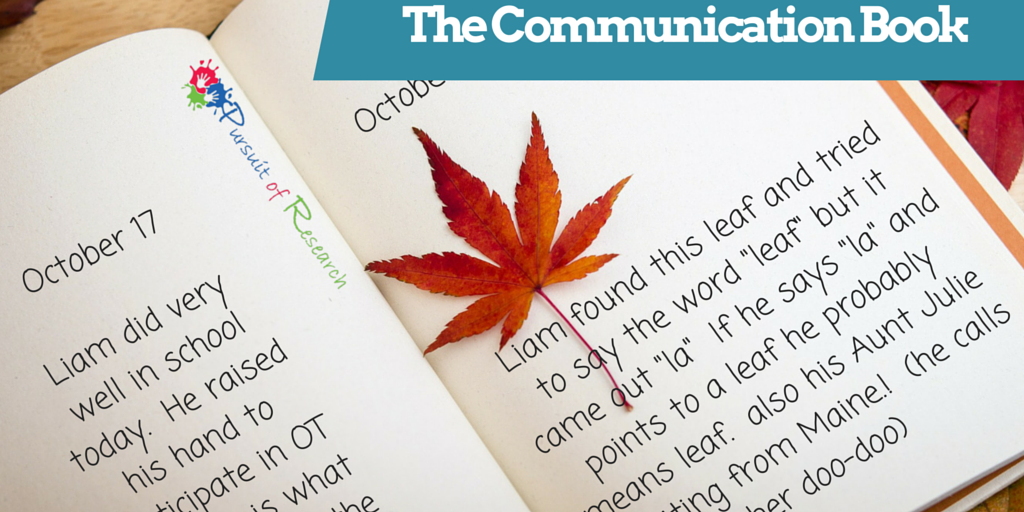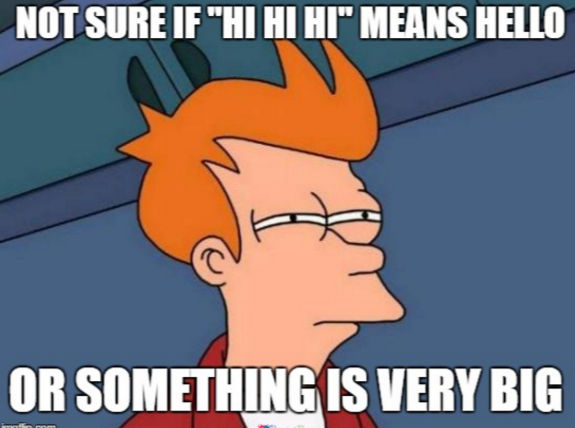One of the best ways of keeping everyone in the loop is through a “communication book.” It’s the child’s diary, except that there may be half a dozen different contributors
 If you don’t know what a communication book and you have a child that has a communication impairment, this will be much needed information from my book The Late Talker
If you don’t know what a communication book and you have a child that has a communication impairment, this will be much needed information from my book The Late Talker
PUT IT IN WRITING
As it is so difficult for your late-talking child to communicate, it’s up to all of the adults in his life to keep in touch with each other and let each other know about the part of his day that they have shared.
One of the best ways of keeping everyone in the loop is through a “communication book.” It’s the child’s diary, except that there may be half a dozen different contributors. For instance, the highlight of your child’s evening may have been a party at which he was given a new truck. But his delight easily turns to frustration the next morning when he cannot share this event with his teacher. By writing the details in his communication book you provide the teacher with the information she needs to open a dialogue with him.
Record other activities in the book: new words he might have produced, an explanation of why he has been happy or sad. Correspondingly, the school teacher could write a brief message explaining why he has that stamp of a puppy on his hand, or providing the words of a song they’ve been learning. Your child’s babysitter or daycare provider can write down what he had for lunch, or what games he played. Perhaps there is sensitive information that they don’t want to discuss in front of him and prefer to put in writing? If you have a private therapist as well as a school-based therapist this is a way for them to pool their knowledge, coordinate what words they are working on, what strategies they are employing, and what progress he has made. The net result is that everyone who cares for your child, and who cares about your child, can have a more informed conversation with him. They will be able to prompt him because of their inside knowledge. It will make him feel more comfortable and relieve his frustration.
Inside the communication book you can also keep a “dictionary” to translate your child’s language or actions. As he increases his vocabulary, add each new word to his own personal dictionary.
LISA’S LIST
Here is a list of things that Lisa wrote in Tanner’s communication book when he was three years old.
Sound Translation
- “Ju Pee” Juice please (he’d also sign for drink)
- “Die die die” Either tight, ride or outside
- “High high high” He wants a lot or it’s very big (both hands up in air)
- “Tee Tee Tee Tee” Little bit, tiny
- “Ma ma mommy” or “da da daddy” Where is mommy or daddy?
- “Eeee” eat Hungry (he’d also sign for eat)
- “Doe” Go
- “Me, me, me? No?” Can I?
- “Tee tee tee tee me?” Is it OK for me to have a tiny bit?
- “Bow” (He can say “ball” but sometimes it comes out like this)
- “Na na know” I don’t know
- “Eah” Egg
- “Tay” OK
- “Die die die die” I go outside?
- “Di di dis” Look at this
When my son Tanner was younger and still struggling in speech, I gave a copy of The Late Talker book to every new teacher he had with a little note in it. He’s not the first nor will be the last child to pass through their classroom door with a speech delay. I’ve found each teacher to not only read the book (not because they said they did but because each brought up aspects from the book to me) but develop a deeper respect for Tanner’s struggles.
Other Resources
- Sample Letters To Your Child’s Teacher
- Tips on Easing Preschool Separation Anxiety
- Planning Your Child’s Transition To Preschool

